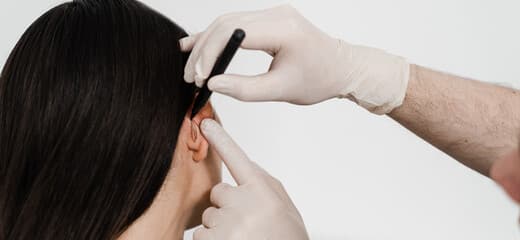Ear, nose, and throat (ENT) is a medical specialty that deals with the diagnosis and treatment of conditions affecting the ears, nose, and throat. ENT doctors, also known as otolaryngologists, are trained to diagnose and treat a wide range of conditions, including:
- Ear infections
- Hearing loss
- Sinus infections
- Nosebleeds
- Tonsillitis
- Sleep apnea
- Head and neck cancer
- Effects of ENT Conditions
ENT conditions can have a significant impact on a person's quality of life. Some ENT conditions can be painful, uncomfortable, and disruptive. They can also make it difficult to sleep, eat, and socialize.
In some cases, ENT conditions can lead to serious complications, such as hearing loss, facial deformities, and even death.
Causes of ENT Conditions
The causes of ENT conditions are varied. Some ENT conditions are caused by infections, while others are caused by allergies, environmental factors, or lifestyle choices.
Balance and Tinnitus Treatment:
Balance and Tinnitus Treatment: These treatment methods target hearing-related conditions such as balance issues and tinnitus. The treatments aim to reduce symptoms, improve balance, and enhance hearing function using various techniques. Examples include physical therapy, medication, hearing aids, and therapy techniques.
Balloon Sinuplasty: This procedure is used to treat sinus blockage. A balloon catheter is inserted into the sinus cavity and inflated to open up the sinus passages. This procedure is effective in treating conditions such as sinusitis, chronic nasal congestion, and sinus inflammation.
Cleft Lip And Palate Repair: Cleft lip and palate are congenital conditions that often require surgical intervention. This treatment involves correcting the clefts in the lip and/or palate. Surgeries are performed by pediatric plastic surgeons and ear, nose, and throat specialists.
Cochlear Implants: Cochlear implants are used to restore hearing in individuals with severe hearing loss. These implants are devices that are surgically placed in the inner ear and provide direct stimulation to the auditory nerve, restoring hearing function.
Ear Infection Treatment: Ear infections are inflammatory conditions of the ear usually caused by bacteria or viruses. Treatment options include antibiotics and pain relievers to control the infection, reduce inflammation, and alleviate symptoms.
Ear Wax Removal: In cases of excessive earwax buildup, it can block the ear canal and cause hearing problems. Ear wax removal methods ensure the safe removal of excess wax from the ear canal. This can be done using special tools or ear drops.
ENT Specialist Consultation: An ENT specialist consultation involves an examination and evaluation of ear, nose, throat, and related issues by an ear, nose, and throat specialist. The specialist assesses symptoms, performs a physical examination, and provides a diagnosis and treatment plan.
Head and Neck Cancer: Head and neck cancer refers to cancer types that occur in the head and neck region. Treatment methods for head and neck cancer may include surgical intervention, radiation therapy, chemotherapy, or immunotherapy, depending on the type, stage, and other factors.
Hearing Aid Fitting: Proper fitting and adjustment of hearing aids are necessary for individuals with hearing loss. Hearing aid fitting involves customizing the fit and settings of the hearing aid to individual needs. It is a process conducted by specialists.
Hearing Test: A hearing test is used to assess a person's hearing level and diagnose hearing problems. This test evaluates parameters such as tone perception, speech intelligibility, and other hearing factors.
Hopi Ear Candling: Hopi ear candling is a natural treatment method used to assist in the removal of earwax build-up. A special candle is inserted into the ear canal and, while burning, aims to create a vacuum effect to draw out ear debris.
OAT - Oral Appliance Therapy: OAT is a method used to treat sleep apnea and snoring. This treatment involves the use of oral appliances worn in the mouth. These appliances help keep the airway open and improve airflow.
Otoplasty: Otoplasty is a surgical procedure performed to correct the shape or position of the ears. It is done to improve the appearance of the ears by altering their shape, size, or position.
Otosclerosis Treatment: Otosclerosis is a condition characterized by abnormal bone growth in the middle ear, leading to hearing loss. Treatment methods for otosclerosis involve surgical intervention to reduce hearing loss and improve hearing function.
Parathyroid Gland Removal: Parathyroid gland removal is a surgical procedure to remove enlarged or hyperactive parathyroid glands. These glands regulate calcium metabolism. The procedure is performed to address abnormal growth or hyperactivity of the parathyroid glands.
Salivary Gland Removal: Salivary gland removal is the surgical removal of the salivary glands. This procedure is used to treat tumors or other abnormalities in the salivary glands.
Septoplasty: Septoplasty is a surgical intervention to correct the deviated nasal septum. The nasal septum is the cartilage and bone structure that divides the nasal cavity into two parts. Septoplasty is performed to alleviate nasal obstruction and improve breathing.
Sinus Surgery: Sinus surgery is a surgical intervention for the treatment of sinus-related conditions. This procedure is performed to treat sinusitis, sinus inflammation, or sinus blockages.
Sleep Apnea: Sleep apnea is a condition characterized by pauses in breathing or irregular breathing patterns during sleep. Treatment options for sleep apnea aim to open the airway, alleviate sleep apnea symptoms, and improve sleep quality. Treatment may include positional therapy, CPAP devices, or surgical intervention.
Speech Therapy: Speech therapy is a treatment method used to correct or improve speech and language disorders. Speech therapists conduct individual or group sessions to enhance communication skills and overcome speech difficulties.
Thyroid Removal: Thyroid removal is a surgical procedure to remove the thyroid gland. This procedure is used to treat thyroid cancer, thyroid nodules, or other thyroid gland-related issues.
Tonsils, Adenoids, and Appendix: Tonsillectomy, adenoidectomy, and appendectomy are surgical procedures to remove the tonsils, adenoids, and appendix, respectively. These surgeries are commonly performed in children and address specific conditions related to these organs.
Tracheal Shave: Tracheal shave is a surgical procedure performed to reduce the prominence of the Adam's apple. This procedure aims to refine the appearance of the neck.
Turbinectomy: Turbinectomy is a surgical procedure to remove nasal turbinates (nasal conchae). This procedure is performed to alleviate nasal obstruction and improve nasal breathing.
Vertigo Treatment: Vertigo is a condition characterized by dizziness or a spinning sensation, often associated with inner ear or balance system issues. Vertigo treatment methods aim to reduce symptoms, restore balance, and manage discomfort using medications, physical therapy, and other techniques.
Rhinoplasty (ENT): Rhinoplasty, also known as nose surgery or nose reshaping, is a surgical procedure performed to enhance the aesthetic appearance or improve the function of the nose
How Can Wupdoc Help?
Wupdoc is a platform that connects users with expert ENT doctors. On Wupdoc, you can easily and quickly find ENT doctors who specialize in the treatment of ENT conditions. You can also create free enquiries to learn more about the doctors and their services.
If you are experiencing any ENT symptoms, it is important to see an ENT doctor for diagnosis and treatment. By working with an ENT doctor, you can improve your quality of life and prevent serious complications.


















